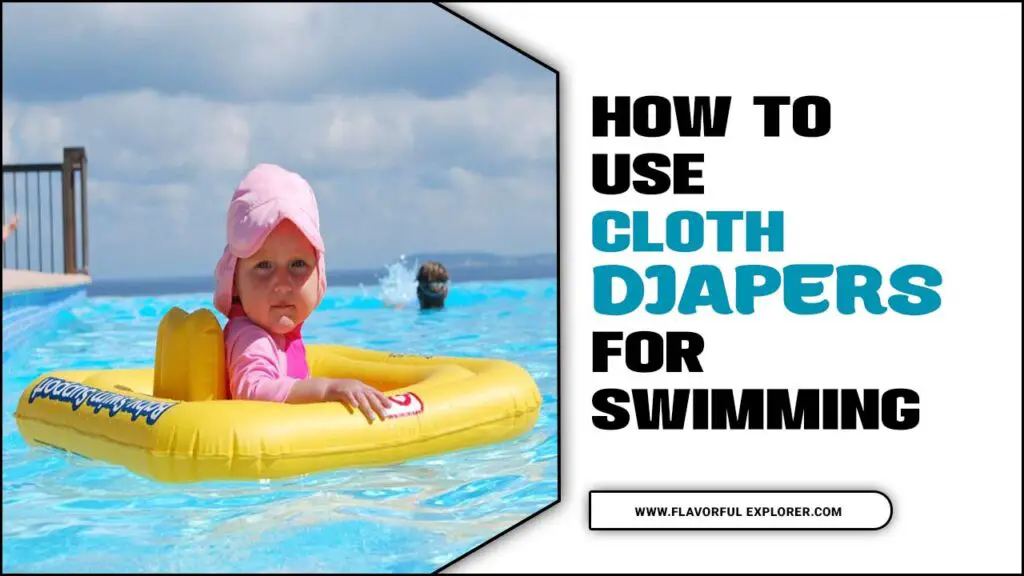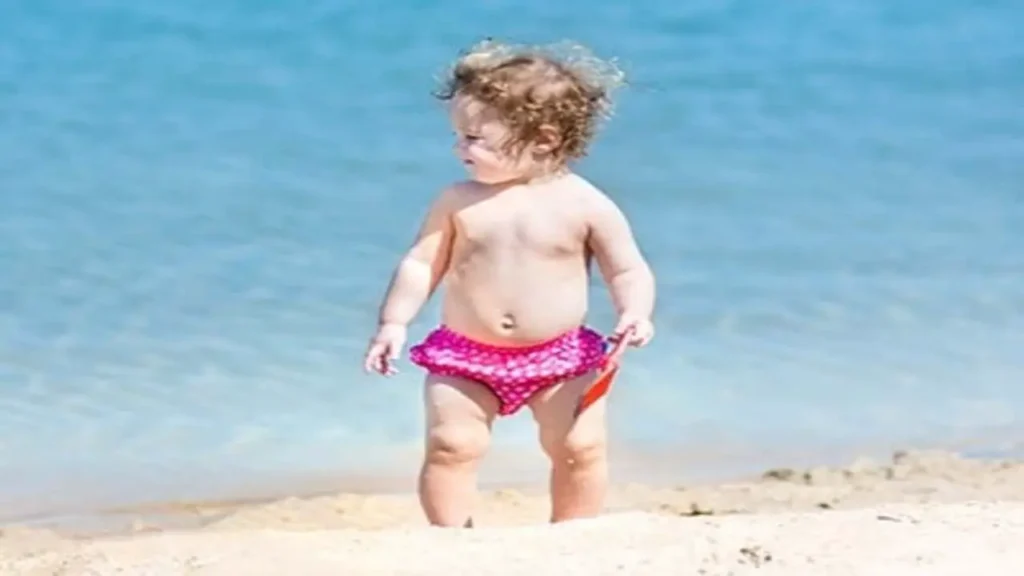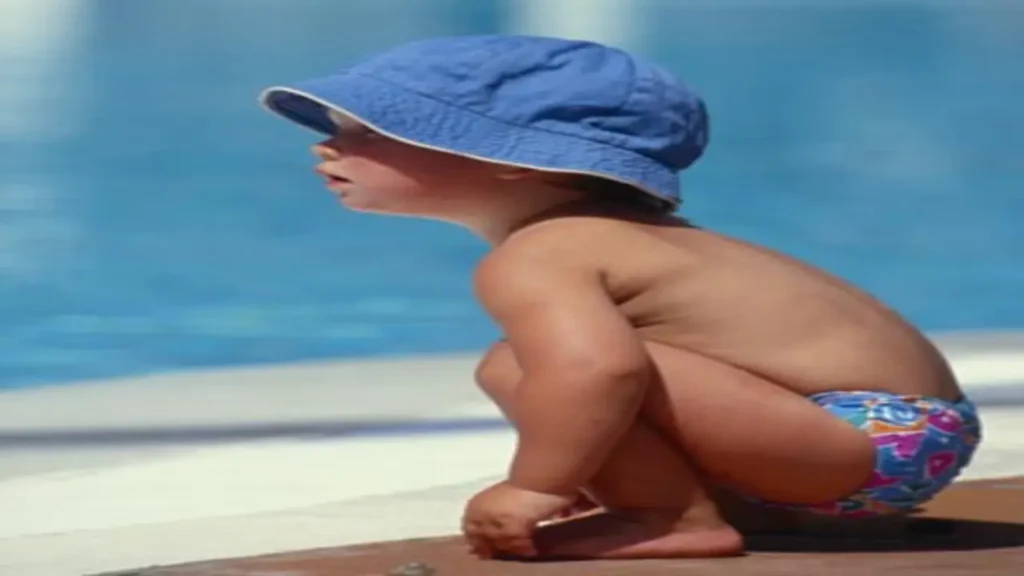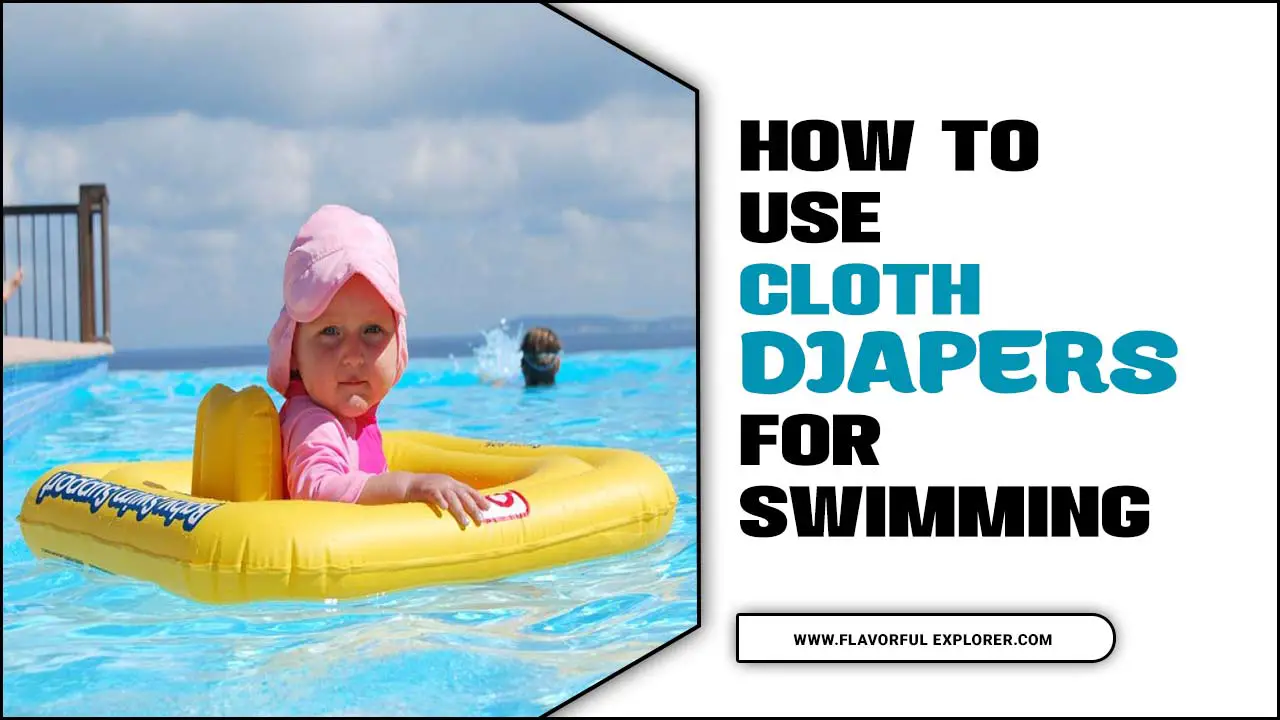Swimming is popular for people of all ages, especially during the summer months. However, for parents of young children, it can bring about a common dilemma – how to keep their little ones comfortable and clean while enjoying a dip in the pool.
This is where cloth diapers for swimming can come in handy. Not only are they an environmentally friendly option, but they also provide a cost-effective and convenient solution for parents. However, using them for swimming might seem daunting for those new to cloth diapers.
Here, we will provide you with a comprehensive guide on how to use cloth diapers for swimming. From choosing the right type of diaper to proper care and maintenance, we will cover everything you need to know to ensure a successful and stress-free swimming experience for you and your little one.

Types Of Cloth Diapers For Swimming
A few different types of cloth diapers have specific designs for swimming. One common type is the swim diaper, which comes with a waterproof outer layer to prevent leaks in the pool. These diapers are typically adjustable and have a snug fit around the legs and waist.
Another option is a reusable swim nappy, similar to a regular cloth diaper but without the absorbent layers. These swim nappies have specific designs to catch any solids and keep them contained while allowing water to flow through easily. Here are some options:
- Swim Diapers: These are lightweight and designed to contain solid waste while allowing liquid to pass through. They often have a waterproof outer layer and a mesh or fabric lining to prevent accidents from leaking into the pool.
- All-in-One Swim Diapers: These are similar to regular cloth diapers but made with swim-friendly materials. They have a waterproof outer layer and an absorbent inner layer to prevent accidents. They are easy to use as they don’t require any additional inserts or covers.
- Swim Diaper Covers: These waterproof covers can be used over regular cloth diapers or disposable swim diapers. They provide an extra layer of protection and help contain any leaks.
- Pocket Swim Diapers: These have a waterproof outer layer and a pocket inside to insert absorbent inserts. They allow for customization in absorbency and are suitable for longer swimming sessions.
How To Use Cloth Diapers For Swimming – 4 Step By Step Guideline

Swimming is a fun activity that babies and toddlers enjoy, and using cloth diapers for swimming is a great eco-friendly alternative to disposable swim diapers. There are a few important steps to follow to use cloth diapers for swimming. Firstly, you must choose a swim diaper specifically designed for use in the water.
These diapers come from a lightweight, quick-drying material that won’t weigh your little one down in the pool. It is important to note that regular cloth diapers are unsuitable for swimming as they become heavy and uncomfortable when wet. Once you have the appropriate swim diaper, adjust it to the right size for your baby’s waist and legs. Here are the 5 steps on how to use cloth diapers for swimming.
Step 1: Choose The Right Cloth Diaper For Swimming
When using cloth diapers for swimming, selecting a diaper specifically designed for water activities is important. Look for swim diapers made of waterproof material and have snug leg openings to prevent leaks. These swim diapers are typically reusable and can be adjusted to fit your baby’s waist comfortably. Before heading to the pool or beach, make sure to give the cloth diaper a thorough wash.
This helps to remove any residue or detergent that may irritate your baby’s skin. Once the diaper is clean and dry, it’s time to put it on. Start by folding it or adjusting the snaps to fit your baby’s size and shape. The diaper should fit snugly but not too tight, allowing easy movement in the water.
Remember that cloth swim diapers are not designed to absorb urine like regular cloth diapers, so changing your baby into a dry diaper is important soon after leaving the water. By using cloth diapers for swimming, you
Step 2: Prepare The Cloth Diaper

Before heading to the pool or beach, ensure your cloth diaper is clean and dry. If necessary, wash and dry the diaper following the manufacturer’s instructions. Ensure that all snaps or Velcro closures are properly fastened. Once your cloth diaper is prepped and ready, lay it flat and place your baby on top.
Gently pull the front of the diaper up between their legs, ensuring it is snug but not too tight. Secure the diaper by fastening the snaps or Velcro closures, ensuring a secure fit. It’s essential to check for any gaps or leaks around the legs and waist to prevent any accidents in the water. You can also use a swim diaper cover over the cloth diaper for added reassurance to provide extra protection.
Remember to pack an extra set of cloth diapers and a wet bag to store used diapers until you can wash them. With these simple steps, you can confidently enjoy fun in the water with your little one without worrying.
Step 3: Put On A Swim Diaper Cover (Optional).
If you want an extra layer of protection, you can use a swim diaper cover over the cloth diaper. This cover will provide an additional barrier against leaks and help keep the diaper in place during swimming. Swim diaper covers come from waterproof material, such as PUL (polyurethane laminated fabric), which helps contain solid waste while allowing water to flow freely. They often feature adjustable snaps or Velcro closures, making achieving a snug and secure fit easy.
When using a swim diaper cover, it is important to ensure that the cloth diaper underneath is properly fitted and positioned to avoid gaps or leaks. Once you have the swim diaper cover, you can enjoy a worry-free swimming experience with your little one, knowing they are protected against water-related accidents.
Step 4: Adjust The Fit.
Place the cloth diaper on your baby or toddler and adjust the fit around the waist and legs. Ensure it is snug but not too tight, allowing movement and comfort in the water. The cloth diaper should have a waterproof outer layer to prevent leaks and contain messes while swimming.
It’s important to note that cloth diapers for swimming have specific designs to be lightweight and quick-drying. Ensuring that your baby stays comfortable and doesn’t get weighed down in the water. After swimming, remove the cloth diaper and rinse off any chlorine or saltwater.
You can then wash the diaper normally, following the manufacturer’s instructions. Using cloth diapers for swimming helps minimize waste and provides an eco-friendly and cost-effective alternative to disposable swim diapers.
Preparing And Caring For Cloth Diapers For Swimming

Preparing and caring for cloth diapers for swimming is a great way to ensure your baby stays comfortable and protected. Here are some steps to help you effectively use cloth diapers for swimming. First, ensure you have the right cloth diaper specifically designed for swimming. These diapers come with a waterproof material that helps prevent accidents while allowing your baby to move freely in the water. After swimming, rinse the diaper again to remove any chlorine or saltwater. Here are some important tips to keep in mind:
- Choose the right cloth diaper: Look for cloth diapers specifically designed for swimming. They come in a lightweight and quick-drying material, such as polyester or polyurethane laminate (PUL), suitable for water use.
- Prepping the diaper: Before using a cloth diaper for swimming, wash and prep it according to the manufacturer’s instructions. This may involve multiple washes to increase absorbency and remove any residues.
- Sizing: Ensure that the cloth diaper fits your baby properly to prevent leaks in the water. Adjustable snaps or hook-and-loop closures can help with achieving a snug fit.
- Use a swim diaper cover: Consider using a swim diaper over the cloth diaper for added protection and containment. Swim diaper covers have specific designs to hold any solid waste
Troubleshooting Common Issues With Cloth Diapers For Swimming
Troubleshooting common issues with cloth diapers for swimming can help ensure a smooth and enjoyable experience. One common issue that may arise when using cloth diapers for swimming is leakage. To address this, ensuring that the diaper is snugly fitted around your baby’s waist and thighs is important.
This will help prevent any gaps where water can seep in and cause leakage. This will make it easier to remove the wet diaper without getting everything else wet in the process. By troubleshooting these common issues, you can ensure a hassle-free Here are some tips to address common problems:
- Leakage: If you’re experiencing leaks while using cloth diapers for swimming, check the diaper’s fit. Make sure it is snug around the legs and waist to prevent any gaps where water can seep in. Double-check that the absorbent inserts are properly positioned and do not cause gaps or compression leaks.
- Absorbency: Cloth diapers used for swimming may not have the same level of absorbency as regular cloth diapers. Consider adding an absorbent layer or booster pad if the diaper isn’t holding enough liquid. This can help prevent leaks and keep your baby comfortable during their swim.
- Cleaning: After swimming, it’s important to rinse the cloth diaper immediately to remove any chlorine or saltwater residue. This helps prevent discoloration and damage to the fabric.
Eco-Friendly Alternatives To Disposable Swim Diapers

There are several eco-friendly alternatives to disposable swim diapers, with cloth diapers being one of the most popular choices. Cloth swim diapers are reusable, reducing waste and environmental impact. They come with waterproof material on the outside and absorbent material on the inside to prevent leaks.
Cloth swim diapers are adjustable and come in different sizes, making them suitable for babies and toddlers. They can be washed and reused multiple times, making them a more sustainable choice than disposable swim diapers. Additionally, some brands offer swim diapers made from organic and chemical-free materials, promoting eco-friendliness.
Do You Boil Cloth Diapers?
If so, one question you may have is, “Do you boil cloth diapers?” Boiling cloth diapers is not necessary for regular cleaning and maintenance. Instead, more efficient methods can be handy to keep your cloth diapers clean and fresh.
To start, it is recommended to rinse soiled cloth diapers in cold water before washing them. This helps to remove any excess waste and prevent stains from setting in. Once rinsed, you can either hand wash or machine wash the cloth diapers. If using a machine, it is advisable to use a gentle cycle with a mild detergent. Avoid using fabric softeners or bleach, as they can cause damage to the diapers and irritate your baby’s delicate skin.
Conclusion
Utilizing cloth diapers for swimming can be an environmentally-friendly choice and a cost-effective, and practical choice. Parents and caregivers can ensure their little ones stay comfortable and mess-free while enjoying the water with the right materials and techniques.
It’s important to choose the right type of cloth diaper for swimming. Look for swim diapers specifically designed for this purpose, as they come with waterproof materials that won’t absorb excessive water. By following these tips on how to use cloth diapers for swimming and being mindful of proper hygiene, cloth diapers can be a great option for any family looking to make a more sustainable splash.
FAQ
1.What Are The Benefits Of Using Cloth Diapers For Swimming Compared To Disposable Diapers?
Ans: Cloth diapers for swimming have several benefits over disposable swim diapers. Firstly, they are reusable, which is both cost-effective and environmentally friendly. Additionally, cloth diapers are often more comfortable for babies as they come from soft, breathable materials. They also provide a better fit, reducing the risk of leaks and accidents in the water. Furthermore, cloth diapers are adjustable and customized to fit different sizes, ensuring a snug and secure fit.
2.Are Cloth Diapers For Swimming Reusable?
Ans: Yes, cloth diapers for swimming are typically reusable. They have specific designs to be washed and reused multiple times, making them more sustainable and cost-effective than disposable swim diapers.
3.Can Cloth Diapers For Swimming Be Used For Babies Of All Ages?
Ans: Yes, cloth diapers for swimming can be handy for babies of all ages. These diapers have specific designs to be adjustable and fit babies from newborns to toddlers. They typically have snaps or Velcro closures, allowing for a customizable fit.
4.Are There Any Specific Precautions Or Considerations To Keep In Mind When Using Cloth Diapers For Swimming?
Ans: Yes, there are some precautions and considerations to keep in mind when using cloth diapers for swimming. Firstly, choosing swim diapers specifically designed for swimming is important, as regular cloth diapers may become heavy and cause discomfort in the water.
5.Are There Any Recommended Brands Or Types Of Cloth Diapers For Swimming That You Would Suggest For Beginners?
Ans: Yes, several recommended brands and types of cloth diapers for swimming are great for beginners. Some popular options include Bummis Swimmi, Charlie Banana Reusable Swim Diapers, and Thirsties Swim Diapers. These brands offer durable and adjustable swim diapers designed to contain messes while allowing for easy movement in the water.
